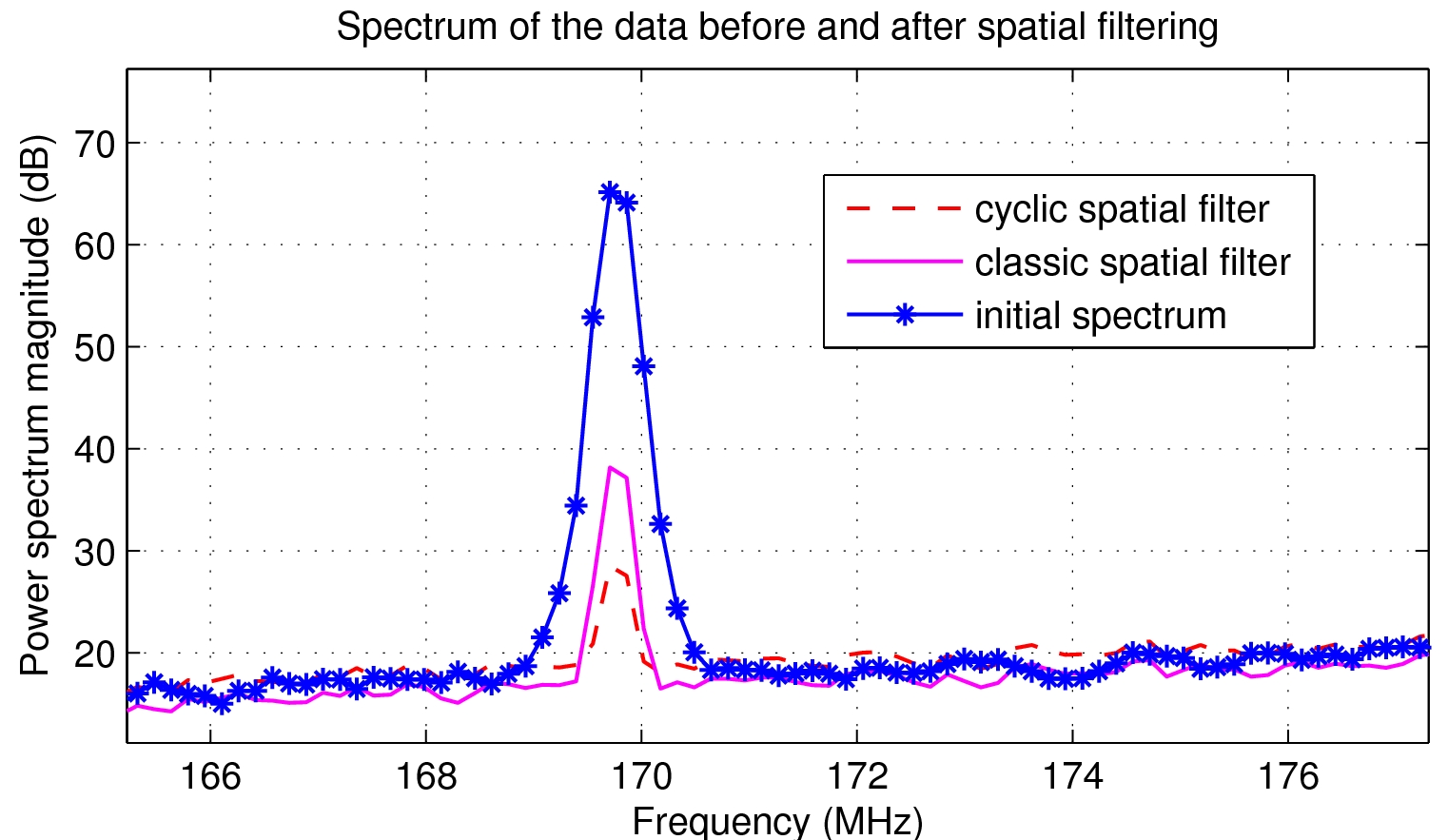Daily Image
14-05-2009Cyclostationary Spatial Filtering of Interference in LOFAR
| Submitter: | Rym Feliachi and Albert-Jan Boonstra |
| Description: | Radio astronomy observations are increasingly hampered by man-made radio frequency interference. This is caused by technological advances both in radio communication technologies and in radio telescope technologies. Many techniques exist to suppress interference, each with limits to their effectiveness and with their attendant implementation costs. One interesting new technique is spatial filtering based on cyclostationary properties of the signals involved. Most communication signals contain (hidden) statistical periodicities which stem. for example, from a transmitter carrier frequency, or from a communication signal baud rate. Such signals are called cyclostationary signals. Cyclostationary higher order products such as correlation functions can be created by multiplying the observed signals with a sinusoid which has a frequency equal to the hidden periodicity. In modulation schemes such as amplitude modulation and binary phase-shift keying this gives rise to spectral characteristics which preserve the transmitter spectrum, but which suppress the system noise. Because of its noise suppression characteristic, cyclic spatial filtering has, under certain conditions, the potential to outperform “classic” spatial filtering. The figure above shows the effectiveness of a cyclostationary spatial filter compared to a “classic” spatial filter, both applied to raw uncalibrated LOFAR CS1 data. The observed LOFAR spectrum shows a strong pager transmitter at 169.8 MHz, before spatial filtering (blue), after “classic” spatial filtering (purple), and after cyclic spatial filtering (red). The cyclostationary filter has a better performance because it is much less sensitive to noise and calibration errors. |
| Copyright: | ASTRON & University of Orleans |
| Tweet |  |
